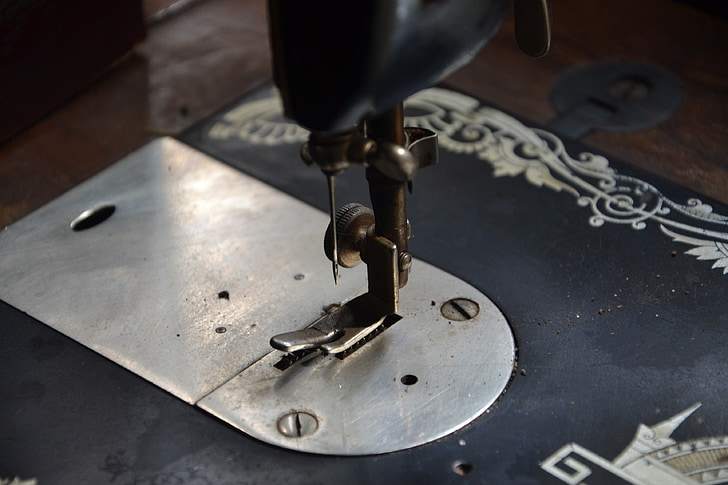

The 1914 vintage “turtle” sewing machine motor mounted to the machine shown in the pictures is a direct drive motor that uses a rubber friction wheel against the balance wheel to power the machine. All of the parts on the machine will be kept original except for the motor and the addition of a Singer style light correct for early vintage model 66’s. Parts that slide or rotate against another will be polished. Each part will be cleaned and wire brushed to bright steel. Everything in and on the body of the machine (except for the Singer badge) will be removed. The mechanical restoration of this machine will include the disassembly of all of the parts and pieces. Because of the quality of material and precision used in it’s manufacture, I think my goal is attainable. the goal of this restoration is to return this sewing machine to as “new” as possible. To my mind, the only way I can get a sense of how this machine sewed when it was new is to completely disassemble and clean all of the parts in the machine, reassemble them, and adjust them to their original specifications. As I said, this machine runs smoothly and sews well, but it has 102 years of use and oil varnish build up in the sewing mechanism. I know that the model 66 was touted by Singer as an innovative and smooth running sewing machine that made a near perfect straight stitch, but I’m not sure there is a comparison between how a model 66 sewing machine runs today and how the same machine ran when it was new. I have always wondered what was it like to sew on this model 66 when it was new. The Restoration Planġ02 years ago when this machine was new it was pristine both mechanically and cosmetically. Worthy of a complete restoration, I will take every step possible to return the machine to “as like new” condition as my skills allow and in any sewing machine restoration, it’s the small details that matter. Manufactured in 1919, it has attained antique status and possesses heirloom quality beyond any doubt. The addition of an aftermarket numbered tension dial on this machine was added to the tension assembly at some point in it’s life, and I intend to replace it with the simple knurled nut as originally used on the machine. The machine does not provide for a back tack or reverse,the feed dogs do not drop (the 66 never included this feature), and the stitch length is adjusted with a stitch length regulator knob instead of a lever. A side clamp presser foot was introduced on the 66 in 1923.

The earlier vintage model 66’s (prior to 1923) have a rear clamp presser foot. When both of these tasks are completed, the end result will be a beautiful sewing machine that runs and sews like new. I also like the “Egyptian scroll” design on the nickel plated parts.

The “Red Eye” decals are in very good condition for their age and I plan to do a detailed original finish cosmetic restoration to accentuate the decals and restore a smooth finish over the original black japanned paint. Despite the fact that the machine runs smooth and sews well, the machine will undergo a complete disassembly and detailed mechanical restoration. I chose this particular model mainly 66 for it’s cosmetic condition. This added simplicity to threading of the machine and the perfection of the stitch it formed. Ever wonder why they call it a class 66 bobbin? Now you know!ĭifferent from the vertical hook design found in most machines of this vintage (excluding vibrating shuttles), the hook was mounted horizontally allowing the bobbin to be simply dropped into the machine. The 66 introduced a smooth oscillating hook and the class 66 bobbin. Built incredibly tough, a model 66 that is well adjusted and in tune can out sew almost any new or modern sewing machine today… and it can do it through a variety of fabrics from linen and lace to horse blankets. Singer claimed (and many believe) that the Singer model 66 was the first mass produced sewing machine that produced a near perfect stitch. First introduced in America in October of 1902 and produced there until 1956 and was also produced in Scotland as the 66K until 1960. The Singer model 66 is truly one of Singer’s fine iconic sewing machines.


 0 kommentar(er)
0 kommentar(er)
